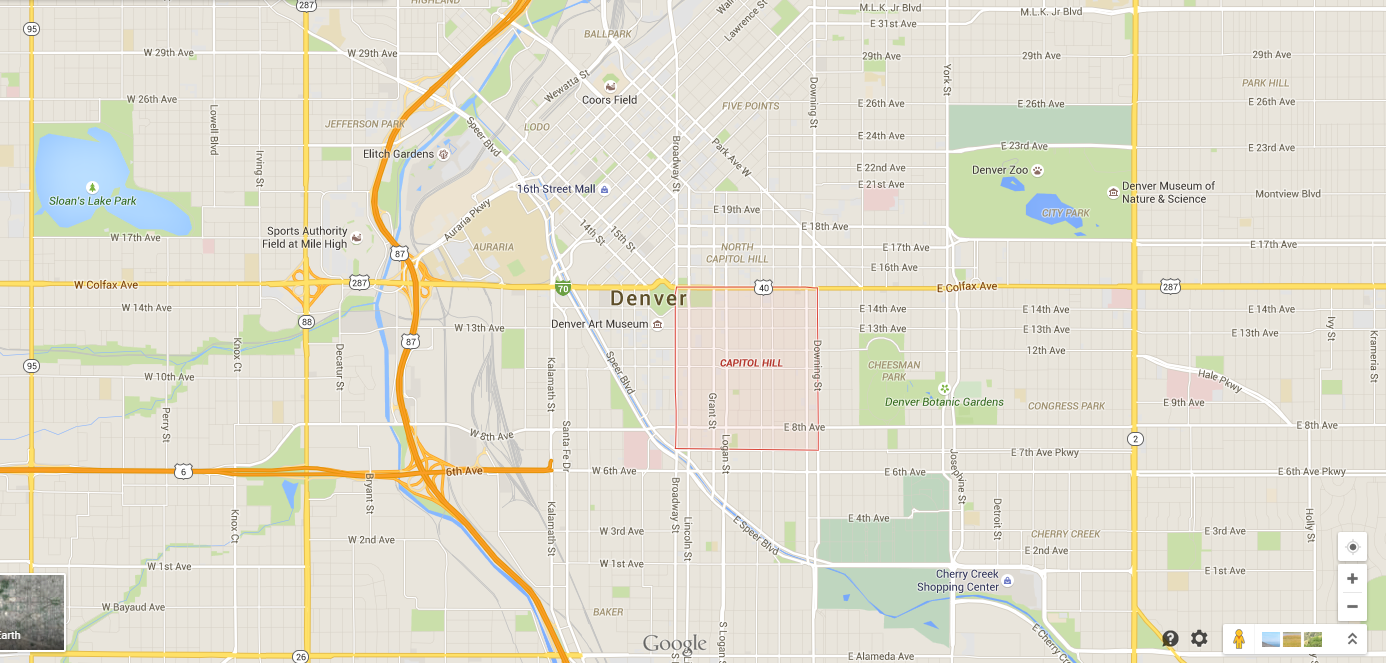DENVER - Every Friday we'll be visiting a different neighborhood around the city. We want to discover what makes those areas so special for those who live there. This week, we are headed to historic Capitol Hill. If you have a suggestion for this week's neighborhood please let us know! You can follow along on our walking tours on Twitter and Instagram with #9neighborhoods. You can also follow us on Snapchat: denver9news.
What makes Capitol Hill?
Full of architecture and history (as well as plenty of hipsters), Denver's affectionately named 'Cap Hill' is a mixture of architectural history, funky coffee shops, and mansions (rumored to be haunted) which were once the dwellings of senators, heiresses, and captains of industry. Among the most famous is the home of the 'unsinkable' Molly Brown, Titanic survivor. That is now The Molly Brown House Museum near 13th and Pennsylvania. An eclectic mix of studios and apartments mix in between the Governor's mansion, art deco dwellings, a castle, and the Cathedral of the Immaculate Conception. Here you'll find young artists, musicians, and coffee connoisseurs living in the area squared off by Broadway, Colfax, Downing, and Sixth Avenues and defined by turn-of-the-century architecture mingled with fresh, urban energy.
Highlights
Historic Denver leads walking tours of Capitol Hill each Friday afternoon. We tagged along and learned quite a bit about the architecture and history of numerous homes in the neighborhood.
- Poet's Row
- Millionaire's Row
- Molly Brown House Museum
- Crawford Hill
- The Denver Woman's Press Club
- Buffalo Bill Cody's Wild West Show
- The Colburn Hotel
- The Croake-Patterson Mansion
- The Pennborough
- The Keating Mansion
- The Dunning-Benedict Mansion
- The Penn Garage (now Pablo's Coffee)
- Govnr's Park
Visit our Instagram Page for the full photo tour
History
Capitol Hill was once prairie land, until 1861, when H.C. Brown took advantage of the Homestead Act and purchased the land from Lincoln to Logan between 11th and 20th Avenues. He offered the land to become the home of Colorado's Capitol building, but the state dragged their feet. Years later, Brown sued the state and they finally decided to build our Capitol where it stands today.
In the late 1890s, Lower Downtown Denver was home to more than 200 saloons and thousands of prostitutes. Residents becoming rich in Colorado off of gold, water or sugar sales, began building their mansions in Capitol Hill. Then, prospectors who lost their silver fortunes moved here to build middle-class homes. In the 1920s, many of those homes became apartments, and rental units were built for low-income families during the Great Depression.
After many of the historic buildings succumbed to Urban renewal in the 1960s, the Denver Landmark Commission was created and set about preserving as many homes as possible.
Today, many of the mansions built in Capitol Hill are designated as National Historic Landmarks in addition to Colorado landmarks.
Gallery
Stats
Median Home Value: $219,700
Median rent: $1,250
Map
Other neighborhoods we've visited on our #9neighborhoods tour:
(© 2015 KUSA)


